Appraising The Mâconnais: A Quartet of Elite Producers Show What Southern Burgundy is Capable of, and Deliver Cut and Tension in Warm Vintages. Four White Packages By Four Growers
The Mâconnais is sprawling (the largest white wine producing region in Burgundy); the Mâconnais is inclusive (red, white and rosé wines may all wear the Mâcon label); the Mâconnais is ancient (Mâcon was a major crossroads in Roman times, where Celtic grape vines already grew), and above all, the Mâconnais is a region ripe for rediscovery. Beyond a few appellations that have always stood head, tails and critic-scores above the rest—think Pouilly-Fuissé and Saint-Véran—the average Mâconnais vigneron, who had previously been content with producing fresh, crisp, inexpensive bistro wines, has spent the last couple of decades waking up to opportunity. Today, the quality bar has been raised exponentially while bottle prices still lag delightfully behind.
This week’s package includes a quartet of elite regional producers. Some of these appellations will be familiar, others may be less so, but all represent the Mâcon renaissance and its recent release of untapped potential.
Mâconnais Wines are Getting Better, more Distinctive
Mâcon has plenty of natural advantages; south of the Côte Chalonnaise and north of Beaujolais, its picturesque landscape of little hills and valleys enjoys ample sunshine and a moderate climate above rich limestone and marl soils left in the wake of a prehistoric sea. This makes it extraordinary Chardonnay country, capable of expressing two faces of Burgundy’s workhorse white—bright acidity and abundant minerality when planted on limestone become rich and fruit-forward when the vines are planted on fertile clay. This lack of a single unifying style has made a grasp of specific locality vital in an appreciation of the Mâconnais appellation overall; there will always be a place in the price-point heart for somewhat generic, often co-op produced Chardonnay, which may end up on the wine lists of restaurants that are likewise, somewhat generic. But the true face of terroir hides beneath any mass-produced wine, including those that wear a simple ‘Mâcon’ label. For the purpose of true distinction between styles and expressions, we must dig deeper and root out producers who are doing more and more with the ground beneath their feet.
Among the flavor notes to look for in this week’s wines is a quality known as salinity. It is not exactly saltiness, but closer to a fierce minerality that puckers the mouth and whets a thirst for more. It may give an impression of seashells or pavement after a rain, and it often melds with earthy, floral and herbal flavors. It is a quality that seems to be appearing more and more in the white wines of Mâcon, especially in the 2020 and 2021 vintages.
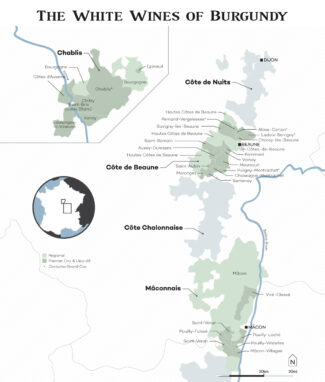
Making Sense of the Appellations of Mâconnais
The Mâconnais encompasses a six-mile by twenty-mile strip of vines between Sennecey-le-Grand and Saint-Vérand. The region nestles between two valleys with the Grosne to the west and the Saône to the east. This allows plenty of room for soils to undulate and change, and the region is subdivided into a number of important appellations beyond the all-inclusive ‘Mâcon’ which can be released as white, red or pink. ‘Mâcon-Villages’ is used only for white wines.
And then it gets wacky: Mâcon plus a village name, such as Mâcon-Prissé and Mâcon-Milly-Lamartine, is not the same as ‘Mâcon-Villages’—these hyphenated wines occupy a higher tier in the hierarchy and some, like Azé and Saint-Gengoux-le-National, are allowed to produce red and rosé while Serrières can only produce red and rosé.
Pouilly-Fuissé, (a white wine appellation with the junior partners Pouilly-Loché and Pouilly-Vinzelles) contains Mâcon’s only Premier and Grand Crus. Saint-Véran is a white wine appellation that covers most of the vineyards that used to make white Beaujolais.
A Riper Shade: Climate Change Challenges Core Notions of Typicity and Terroir
With steadily rising temperatures and the havoc caused by increasingly severe weather patterns, a sudden new question arises: How quickly must the Mâconnaise adopt a ‘do or die’ ethos? Burgundy’s wine industry is facing tough climate-related decisions across the board, and most of the answers will require trading tradition for innovation, up to and including replacing old Chardonnay clones with newer ones, and—blasphemy to some—replacing some Chardonnay acres with frost-resistant varieties like Aligoté, whose high acidity could be a solution for retaining freshness in the region’s whites.
There is an upside to this upset grape-cart, though—mid-slope regions with good exposure and drainage have always been prized vineland. But in times of drought, drainage is not the problem: Water retention is. Now, plots that were previously deemed ‘lesser’ due to clay soils at the bottom of slopes and cooler sites on the top of slopes are beginning to produce high quality wine grapes. Drought is also putting a premium on older vines, whose root systems are deep enough to reach water reserves. Many of the Mâconnais wines featured in this week’s package make a special mention of the age of their vineyards—a nod toward a vine’s increasing natural stability as it ages, enabling it to withstand more extreme temperatures.
Domaine Saumaize-Michelin
Five-Bottle Package $218
Christine (née Michelin) and Roger Saumaize may exemplify a new generation of Mâcon winemakers tending relative small plots of excellent terroir and engaged upon an organic quest for sustainability. With 25 acres of vines, mostly in the Vergisson area of Pouilly-Fuissé (which can come from four villages; Solutré-Pouilly, Fuissé, Vergisson and Chaintré) they produce ten Pouilly-Fuissés, two Saint-Vérans, one Viré-Clessé and two Mâcons.
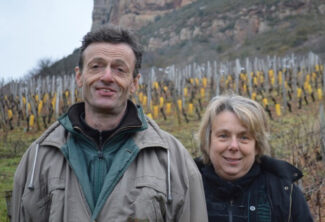
Roger Saumaize and Christine Michelin, Domaine Saumaize-Michelin
The couple maintains that their first goal is ‘the optimum expression of terroir’, to which Roger adds, “Our vines average 50 years old and the philosophy of our farming is to capture the energy of the place. All the grapes are hand-harvested and, depending on the vintage and parcel, may be picked in several passes. Our work in the cellar is very straight-forward; there is a gentle and slow pressing in two pneumatic presses. After the juice has settled for a day, it’s moved right into barrel for fermentation and aging. Wines are aged on the lees with occasional stirring for twelve months.”
Pouilly-Fuissé
West of the town of Mâcon, the land rises to form a series of hills; Mont de Pouilly gives the region its name, but rocky outcrops of Solutré and Vergisson play a more prominent role in the remarkable terroir of Pouilly-Fuissé. The vines are planted all around these two hills on clay-limestone soils mixed with upslope scree. Steep-sided streams give these slopes an ideal easterly or south-easterly exposure. Granted Premier Cru designation in September 2020, there are currently 22 climats entitled to wear this label: The finest Pouilly-Fuissés easily rival the best wines of the Côte de Beaune.
A typical Pouilly-Fuissé showcases citrus and peach notes as well as some minerality; oak-barrel aging may leave an impression of smoke on the aftertaste.
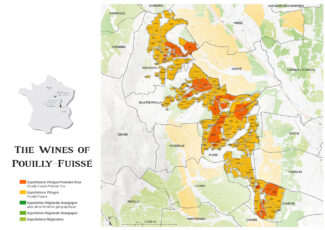
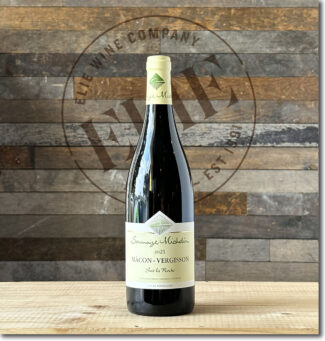 Domaine Saumaize-Michelin, 2021 Pouilly-Fuissé Premier Cru Sur la Roche ($57)
Domaine Saumaize-Michelin, 2021 Pouilly-Fuissé Premier Cru Sur la Roche ($57)
From a four-acre parcel on the slopes of the Vergisson Rock, ‘Sur la Roche’ benefits from a southern exposure. Produced from the oldest site on the estate where the vines are nearly a century old, Sur La Roche Premier Cru has a gorgeous bouquet filled with white tea and wild peach on the nose and a creamy/crisp palate with beautifully-defined minerality.
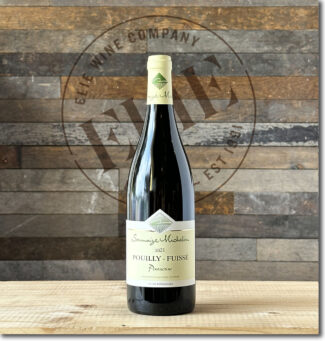 Domaine Saumaize-Michelin, 2021 Pouilly-Fuissé ‘Pentacrine’ ($43)
Domaine Saumaize-Michelin, 2021 Pouilly-Fuissé ‘Pentacrine’ ($43)
The name ‘Pentacrine’ is derived from a small marine star-shaped fossil found in some soils around the Rock of Vergisson and this cuvée blends grapes from five different parcels grown on a limestone base. It is vinified in large demi-muids to enhance and preserve freshness in the wine. It works: The elegant notes of white flowers, citrus and exotic fruits balance the minerality of the exceptional terroir, softened delicately by subtle toasty notes from the oak.
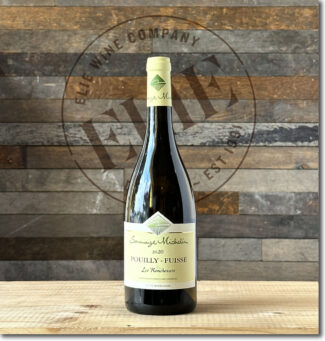 Domaine Saumaize-Michelin, 2020 Pouilly-Fuissé ‘Les Ronchevats’ ($42)
Domaine Saumaize-Michelin, 2020 Pouilly-Fuissé ‘Les Ronchevats’ ($42)
‘Les Ronchevats’, grown on Triassic clay soils, has been renamed ‘Aux Charmes’ for the 2021 vintage, but the vines are the same. The 2020 expresses an airy nose of grapefruit spiked by hints of spice, wood and a slightly honeyed back note.
Saint-Véran
Saint-Véran is made in any one of four Mâconnais villages, Chasselas, Leynes, Chânes and Saint-Véran itself, forming a sort of belt around Pouilly-Fuissé. This creates two separate islands on slopes of the hill chain to which the famous Rock of Solutré belongs. This rocky backbone is made of fossiliferous limestone from the Middle Jurassic; on the Western side are older rocks covered with grey marls on which the vineyards of Chasselas and Leynes can be found. The gentler east-facing slopes are composed of marly limestones on which are found the vineyards of Prissé and Davayé. At Chânes and Prissé, on the left bank of the little river Grosne, the vines grow on fossiliferous limestones, often overlain by a layer of clay and flint. This latter terroir in particular leads to the gunsmoke notes that may appear in Saint-Véran, often over peach, pear and more exotic hints of honeysuckle and cinnamon butter.
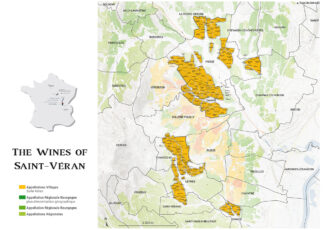
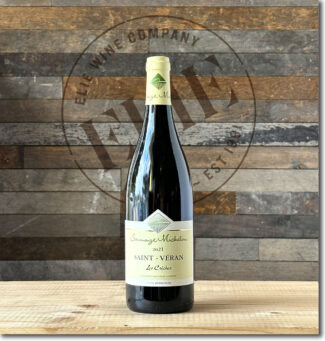 Domaine Saumaize-Michelin, 2021 Saint-Véran ‘Les Crèches’ ($38)
Domaine Saumaize-Michelin, 2021 Saint-Véran ‘Les Crèches’ ($38)
Les Crèches lieu-dit, situated in Davayé, is planted on limestone-based soils that contain a quantity of soft chalk. The wine blends two parcels; one 40 years old and the other over 60. The older vines bring subtlety and depth while the younger vines bring minerality and freshness. 100% barrel fermented, then aged 12 months in 228-liter French oak barrels; bâtonnage is done once every 10 days for 9 months while the must ages on fine lees. The wine displays aromas of pear, citrus oil and white flowers girdled by bright acids.
Mâcon-Vergisson + Mâcon-Solutré + Mâcon-Davayé
These hyphenated cousins form a triangle just to the west of the village of Pouilly Fuissé and share some characteristics: The wine they produce shows sophisticated aromas of lemon and citrus blossom and the palate is often hedonistic, with candied stone fruit braced by acidity. The palate often resolves itself with a subtle salinity.
Vergisson is found at the heart of the escarpments of the southern Mâconnais atop the rounded hilltop of the Rock of Vergisson, at the edge of the village of Prissé and the Saint-Véran appellation.
The limestone terraces of Solutré are built up from fossilized coral reefs laid down by a shallow, warm sea in a tropical climate some 170 million years ago. As well as Pouilly-Fuissé, Solutré-Pouilly also falls under the Saint-Véran appellation which runs from Solutré-Pouilly to the commune of Saint-Véran further south.
The terroir of Davayé is limited to the east by the Petite Grosne river; the Mâcon-Davayé appellation is located close by the river alongside the vines of Saint-Véran.
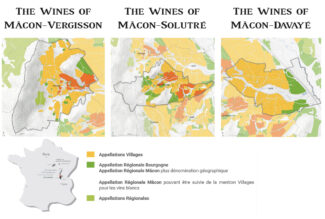
 Domaine Saumaize-Michelin, 2021 Mâcon-Vergisson ‘Sur la Roche’ ($38)
Domaine Saumaize-Michelin, 2021 Mâcon-Vergisson ‘Sur la Roche’ ($38)
From 25-year-old vines on the northeast side of the Roche de Vergisson grown in three distinct parcels—two with a limestone base and the third on clay. It displays a perfumed nose of acacia and peach skin and nice acid-sharp, lemony palate with a touch of ginger offering spice on the finish.
Domaine du Roc des Boutires
Three-Bottle Package $208
Domaine du Roc des Boutires is named in part for the iconic limestone escarpment five miles west of Mâcon that overlooks the commune of Solutré-Pouilly and also for the superb ‘Aux Bouthières’ vineyard. The estate draws from 14 terroirs spread over Pouilly hillsides and was purchased in 2017 by the Parinet family, best known for Château du Moulin-à-Vent.
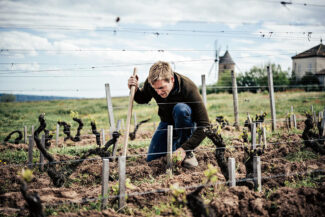
Winemaker/Viticulturist Brice Laffond, Domaine du Roc des Boutires
Winemaker/viticulturist Brice Laffond came along from Beaujolais for the new experiment, bringing with him the techniques he favors: “Harvest, done entirely by hand, usually lasts four days and grapes are taken to the fermentation tanks in 40-liter cases—vinification follows a single-vineyard approach. The berries are driven to the pressoir by gravity, immediately pressed with the whole bunch in order to filtrate the best and most natural way possible. Once the ‘pressurage’ is done, the juices are cooled down to 8°C for two days to make the particles fall in the tank. The cold débourbage enables us to preserve the best quality and primary aromas. Malolactic fermentation is allowed to happen naturally; bâtonnages are few and aging is in barrels or tanks depending on the profile of the vintage.”
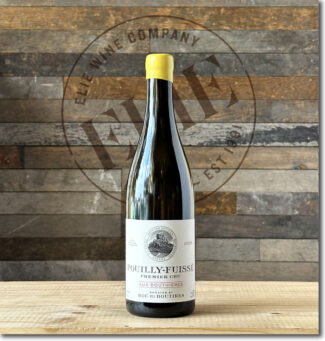 Domaine du Roc des Boutires, 2020 Pouilly-Fuissé Premier Cru Aux Bouthières ($89)
Domaine du Roc des Boutires, 2020 Pouilly-Fuissé Premier Cru Aux Bouthières ($89)
From 75-year-old vines grown at 900 feet, the domain tends 1.6 acres of the ‘Aux Bouthières’ climat where soils are deep clay interlaced with shale. The vineyard was officially classified as Premier Cru in 2020. A classic Pouilly-Fuissé profile blending lemon and peach flavors shored by subtle, oak-driven honey behind layers of salinity.
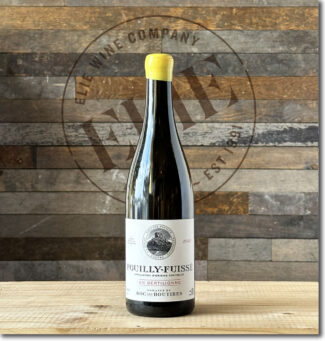 Domaine du Roc des Boutires, 2020 Pouilly-Fuissé ‘en Bertilionne’ ($73)
Domaine du Roc des Boutires, 2020 Pouilly-Fuissé ‘en Bertilionne’ ($73)
The grapes originate in the lieu-dit ‘Bertilionne’, a small plot of east-facing, 35-year-old vines directly in front of the Roche de Solutré. The wine is crisp and rich, leaning toward tropical fruit hints with pineapple and vanilla notes behind a silken stone-fruit palate.
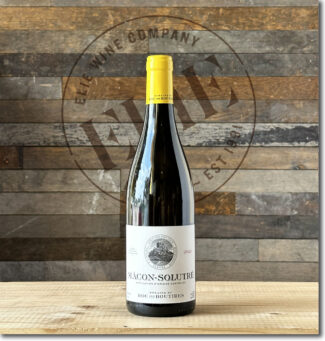 Domaine du Roc des Boutires, 2020 Mâcon-Solutré ($46)
Domaine du Roc des Boutires, 2020 Mâcon-Solutré ($46)
From the lieux-dits ‘Au Mont’ and ‘Aux Combes’, where the domain has an acre and a half of vineyards with a south/southeast exposure. At around 1400 feet, these 40-year-old vines grow at the highest elevation in the AOP. The grapes are whole-bunch pressed and allowed a cold maceration to extract essence; the wine then ages for a year on fine lees. It shows peach, apricot, lemon cream and vanilla.
Domaine de la Croix Senaillet
Three-Bottle Package $85
De la Croix Senaillet takes its name from a cross donated by an old village mayor, Benoit Senaillet. Brothers Richard and Stéphane Martin both own and work 60 plots as part of the ‘Grand Site de France’ vineyards of Solutré , Pouilly and Vergisson, although the bulk of their land is in Saint-Véran. The vines, entirely Chardonnay, average 40 years old and face the rising sun on gentle slopes extending from the eastern faces of Solutré and Vergisson.
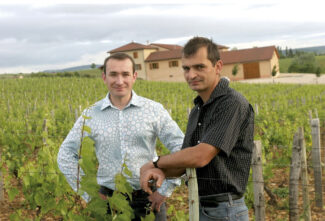
Brothers Richard and Stéphane Martin, Domaine de la Croix Senaillet
“Our soil is marly chalk from the middle and upper Jurassic period,” says Stéphane, who oversees the vineyard. “With this comes a slight alteration of clay silt that can be carried along the slopes by rainwater. When this happens the soil is quite shallow and mainly chalky at the top of the slope and deeper with more clay at the bottom.”
Richard, in charge of sales and winemaking, adds, “We farm along strict organic principals, but also with an eye to growth. Since take over from our father Martin, we’ve grown our family holdings from 6 to 25 hectares (15 to 62 acres), with the majority of expansion in the Davayé commune. We like to think our wines offer tremendous value from a region that is seeing prices escalate.”
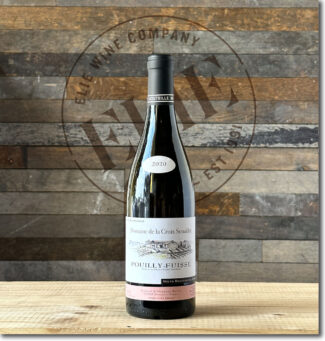 Domaine de la Croix Senaillet, 2020 Pouilly-Fuissé ($37)
Domaine de la Croix Senaillet, 2020 Pouilly-Fuissé ($37)
Very low yielding 70-year-old vines from the villages of Solutré and Fuissé, planted on a south and northeast-facing parcel of Jurassic-era limestone mixed with platy marl. Harvest is done at full maturity followed by destemming and slow pneumatic pressing. Fermentation takes places in demi-muids; the wine is aged on the lees for 10 months. It is entirely unoaked and shows chamomile on the nose with litchi and citrus with hints of spice.
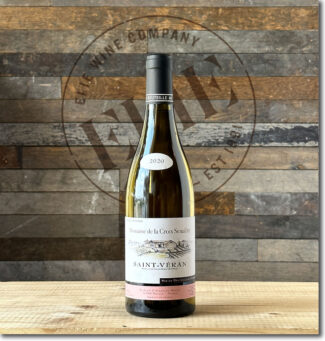 Domaine de la Croix Senaillet, 2020 Saint-Véran ($26)
Domaine de la Croix Senaillet, 2020 Saint-Véran ($26)
Produced from a selection of 40 parcels spread over 42 acres, including Maillettes, Bergades, Poncétys, Terres Noires, Pommards, Chênes, Surigny, Prâgnes, Bruyère, Chailloux, all with southeastern exposures. The wine shows pear, licorice and thyme on the nose, with a plate of citrus, orchard fruit, melon, and sweet peach with underlying salinity.
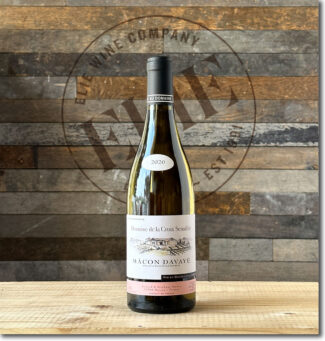 Domaine de la Croix Senaillet, 2020 Mâcon Davayé ($22)
Domaine de la Croix Senaillet, 2020 Mâcon Davayé ($22)
Produced from eight different parcels that spread over 13 acres; the vines are middle-aged at 30 years. Minimal intervention is employed—destemming, slow press, slow fermentation, natural malolactic and aging on the lees, yielding notes of litchi and citrus up front, with lemon mint and apple providing an appealing crunchiness and a persistence in the mouth.
Domaine Guillemot-Michel
Three-Bottle Package $149 (recent arrival included)
After studying viticulture and oenology, Pierrette Michel and her husband Marc Guillemot returned to the estate of Pierrette’s parents, who ran a small domain located in Quintaine, between the villages of Viré and Clessé in the heart of the Viré-Clessé appellation—one of the three Mâconnais crus. In 1985, the couple bottled their first vintage under the name ‘Guillemot-Michel.’
Guillemot-Michel vines were farmed organically from the beginning, Demeter certified from 1991 to 2017 and in 2018 obtained Biodyvin certification.
In 2012, Pierrette and Marc’s daughter Sophie, along with her husband Gautier, joined the team and are currently in the process of a gradual takeover of the estate’s management. Together, they care for 16 acres of old-vine Chardonnay between 55 and 60 years old.
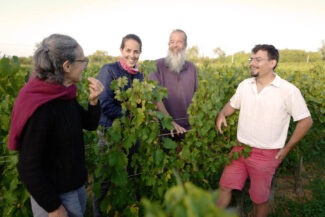
Marc and Pierrette Guillemot-Michel, Domaine Guillemot-Michel
pictured with daughter Sophie and son-in-law Gautier Roussille
According to Pierrette Michel, “Our work in biodynamics aims first of all to maintain a living soil, by mechanical and non-chemical maintenance, and by the refusal of any synthetic phytosanitary product during treatments, in favor of mineral substances and herbal preparations. These preparations are made at the estate or in groups with other winegrowers. We grow some of the plants used (yarrow, horsetail, nettle, alfalfa, valerian, comfrey, thyme, oregano, savory, etc.) or collect wild plants.”
Marc adds, “In the cellar, we limit our interventions to what is strictly necessary, thanks to an optimal quality of harvest. When ripe, the grapes are picked by hand and then gently pressed. The musts are decanted cold overnight to separate the clear juices from the lees. The alcoholic and malolactic fermentations take place naturally in concrete vats thanks to indigenous yeasts and bacteria. After fermentation, the wine is kept on the lees until bottling, in early summer.”
Viré-Clessé
The appellation Viré-Clessé only received official recognition in 1998 and was the first appellation village to be formed from outstanding terroirs within the AOP Mâcon-Villages. Viré and Clessé are two communes in southern Burgundy lying between Tournus and Mâcon. Because the wines of the two villages closely resemble each other in typicity, it was decided to form them into a single appellation, although the terroirs included in it were subjected to a rigorous selection process. Viré and Clessé also produce wines of the appellations Mâcon, Bourgogne and Mâcon-Villages. The names Mâcon-Viré and Mâcon-Clessé have been in disuse since 2002.
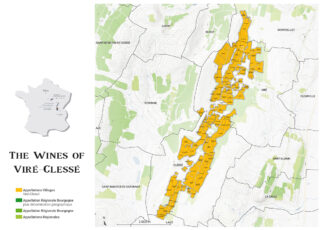
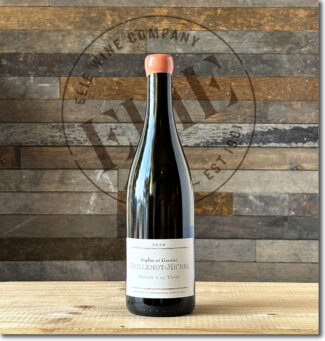 Sophie et Gautier Guillemot-Michel ”Retour à la Terre’, 2020 Viré-Clessé ($62)
Sophie et Gautier Guillemot-Michel ”Retour à la Terre’, 2020 Viré-Clessé ($62)
2020 was an early vintage with near-perfect growing conditions, although with little rainfall. The clay-rich terroir of Retour à la Terre retains water, perfectly withstanding such dry vintages. From 64-year-old vines grown on rootstock that yields tiny, flavor-packed berries, this 100% Chardonnay is fermented and matured solely in 800-litre terracotta amphorae. Citrus, stone fruit, hay and white flowers lead to bright acidity and brine on the finish.
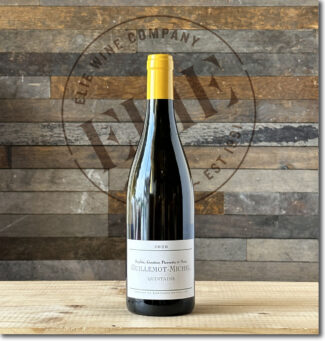 Sophie et Gautier Guillemot-Michel, 2020 Viré-Clessé ‘Quintaine’ ($40)
Sophie et Gautier Guillemot-Michel, 2020 Viré-Clessé ‘Quintaine’ ($40)
100% Chardonnay, the 2020 Viré-Clessé ‘Quintaine’ has a balanced edge of sweet and saltiness, showing citrus zest, white flowers and crisp melon above a layered fruit/mineral palate. A beautifully balanced and vibrant wine from a warm vintage that will richly reward the allowance of some bottle age.
NEW ARRIVAL
Wine First, Then Bubbles
A Burgundy By Any Other Method
The main difference between a Crémant and a Champagne is the origin of its region of production; both benefit from an Appellation d’Origine Protégée (AOP) and their techniques are highly regulated—among the requirements for both is an adherence to the traditional method (called ‘Champenoise’ in Champagne and ‘Traditionelle’ elsewhere), which requires the addition of sugar and dosage. For their vintage cuvée ‘Une Bulle’ (‘a bubble’), Sophie and Gautier have opted to use Ancestral Method, where only the natural grape sugars are used. As such, it is not allowed to call itself Crémant and is labeled ‘VdF Vin Mousseux’.
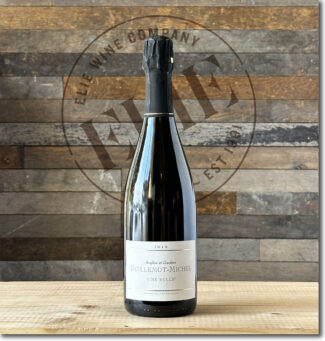 Sophie et Gautier Guillemot-Michel ‘Une Bulle’, 2019 VdF Vin Mousseux Brut ‘Méthode Ancestrale’ ($49)
Sophie et Gautier Guillemot-Michel ‘Une Bulle’, 2019 VdF Vin Mousseux Brut ‘Méthode Ancestrale’ ($49)
Sophie offers details: “In order to be able to harvest grapes at maturity and not to add exogenous sugars, our Une Bulle cuvée is produced by us according to the ‘Ancestral Method.’ In this method, only the natural sugars of the grape are used, so we harvest grapes that are around 2% more mature that we would use for Crémant, making them less acidic and more aromatic. The grapes are brought in on the first day of the harvest at a potential degree of around 12.5. They are pressed, settled and begin their fermentation in vats. After a few days of fermentation, when there is just enough sugar left to produce the quantity of gas expected in the bottle, leaving a slight residual sugar for gluttony, the must is bottled.”
Gautier picks up the story from there: “The prize ‘de mousse’ then takes place; the gas produced by the fermentation is locked in the bottle, producing bubbles. We have chosen to let ‘Une Bulle’ age on slats for at least 15 months (like a Champagne) before disgorging. During this period, the wine evolves and is enriched in contact with the yeasts locked in the bottle. After 15 to 24 months of aging on slats, ‘Une Bulle’ is stirred and then disgorged: We do not use dosage liqueur since the natural sugars of the grapes serve as this. As a general rule, batches disgorged at 16-19 months present a little more tension and fresher notes (pear), while batches disgorged late present more fullness and riper notes (quince).”
- - -
Posted on 2023.08.03 in Mâconnais, France, Wine-Aid Packages
Featured Wines
- Notebook: A’Boudt Town
- Saturday Sips Wines
- Saturday Sips Review Club
- The Champagne Society
- Wine-Aid Packages
Wine Regions
Grape Varieties
Albarino, Albarín Blanco, Albarín Tinto, Alicante Bouschet, Aligote, Altesse, Arbanne, Auxerrois, Barbarossa, barbera, Biancu Gentile, Bonarda, bourboulenc, Cabernet Sauvignon, Calvi, Carcajolu-Neru, Chasselas, Chenin Blanc, Cinsault, Clairette, Cortese, Corvinone, Cot, Counoise, Dolcetto, Erbamat, Fiano, Fromenteau, Fumin, Gamay, Garganega, Garnacha, Garnacha Tintorera, Gewurztraminer, Godello, Graciano, Grenache Blanc, Groppello, Jacquère, Juan Garcia, Lambrusco, Lladoner Pelut, Loureira, Macabeo, Macabou, Maconnais, Malbec, Marcelan, Marsanne, Marselan, Marzemino, Melon de Bourgogne, Mencía, Merlot, Montanaccia, Montepulciano, Montònega, Morescono, Moscatell, Mourv, Mourvèdre, Muscadelle, Muscat, Natural, Nebbiolo, Niellucciu, Parellada, Patrimonio, Pecorino, Pedro Ximénez, Persan, Petit Meslier, Pineau d'Aunis, Pinot Auxerrois, Pinot Blanc, Pinot Gris, Pinot Meunier, Pinot Noir, Pouilly Fuisse, Pouilly Loche, Riesling, Rousanne, Sagrantino, Sangiovese, Sauvignon Blanc, Sciacarellu, Semillon, Sparkling, Sumoll, Tempranillo, Teroldego, Timorasso, Trebbiano, Trebbiano Valtenesi, Ugni Blanc, Verdicchio, Vermentino, Viognier, Viura, Xarel-loWines & Events by Date
- May 2024
- April 2024
- March 2024
- February 2024
- January 2024
- December 2023
- November 2023
- October 2023
- September 2023
- August 2023
- July 2023
- June 2023
- May 2023
- April 2023
- March 2023
- February 2023
- January 2023
- December 2022
- November 2022
- October 2022
- September 2022
- August 2022
- July 2022
- June 2022
- May 2022
- April 2022
- March 2022
- February 2022
- January 2022
- December 2021
- November 2021
- October 2021
- September 2021
- August 2021
- July 2021
- June 2021
- May 2021
- April 2021
- March 2021
- February 2021
- January 2021
- December 2020
- November 2020
- October 2020
- September 2020
- August 2020
- July 2020
- June 2020
- May 2020
- April 2020
- March 2020
- February 2020
- January 2020
- December 2019
- November 2019
- October 2019
- September 2019
- August 2019
- July 2019
- June 2019
- May 2019
- April 2019
- March 2019
- February 2019
- January 2019
- December 2018
- November 2018
- October 2018
- September 2018
- August 2018
- July 2018
- June 2018
- May 2018
- April 2018
- March 2018
- February 2018
- January 2018
- December 2017
- November 2017
- October 2017
- September 2017
- August 2017
- July 2017
- June 2017
- May 2017
- April 2017
- March 2017
- February 2017
- January 2017
- December 2016
- November 2016
- October 2016
- September 2016
- August 2016
- July 2016
- June 2016
- May 2016
- April 2016
- March 2016
- February 2016
- January 2016
- December 2015
- November 2015
- October 2015
- September 2015
- August 2015
- July 2015
- June 2015
- May 2015
- April 2015
- March 2015
- February 2015
- January 2015
- December 2014
- November 2014
- October 2014
- September 2014
- August 2014
- July 2014
- June 2014
- April 2014
- March 2014
- February 2014
- January 2014
- December 2013
- November 2013
- October 2013
- September 2013
- August 2013
- July 2013
- June 2013
- May 2013
- April 2013
- March 2013
- February 2013
- January 2013
- December 2012
- November 2012
- October 2012
- February 2004
Search



